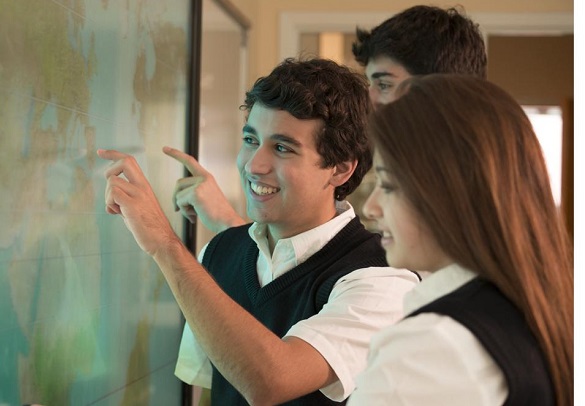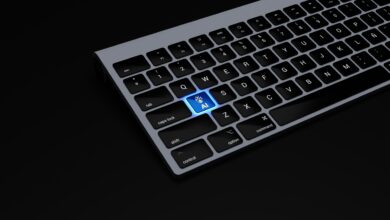Digital tools for interactive teaching

One of the phrases we hear a lot in education today is “interactive teaching”. A bit like organic food, it is often bandied about as if new and fancy when of course it has been around from the beginning of time. If you teach, ask questions and lead discussion, you are already teaching interactively; the difference today is that teachers can unleash the full power of multimedia in their classrooms.
Take a lesson about the Cook Islands, for example. In the past, the class may have trudged to the school library and spent half the lesson time looking for books about the Pacific Islands. A student or teacher may have been able to share traditional craft skills. However, with today’s digital tools, students can hear language spoken by a native, sing along to traditional songs, peer into the virtual world of their contemporaries in the Islands, and even engage in conversation with them or follow a virtual lesson in weaving.
Some of the most sought-after tools in schools today are interactive flat panels and interactive projectors. “Ninety per cent of our sales are interactive flat panels,” says Murray Thoms of ACTIVboardNZ. “We’ve sold around 10,000 interactive devices, but schools who have had interactive whiteboards for a number of years and who are looking to upgrade, are now trading them up and putting panels in.”
A panel is self-contained and mounted on a wall. The resolution is high definition, there is no need for blinds to be down – “you just plug them in and go”. They are also available on mobile stands allowing full flexibility, a popular option in innovative learning spaces.
“In many respects, the interactive whiteboard is not too different to the product we were supplying in the ’90s when every classroom had a television,” says Mr Thoms. “What we like and what many of our schools like is the ability to interact with that content and work with it, it’s much more engaging and of course the screen is a much more useable size.”
Global demand for high tech product has driven down the cost to consumers. In Turkey, for example, the government is financing supply of 450,000, 65-inch flat panels to schools, turning the local manufacturer – Vestel, into one of the world’s biggest manufacturer of flat panels. It’s a similar story in China where they have 6.1 million classrooms – almost 48 per cent of these are already equipped with interactive technology but there has been a big swing away from IWBs to interactive flat panel displays with almost half a million classrooms receiving flat panels last year.
At Takapuna Primary, the interactive journey stepped up a notch last year when the school bought its first ActivPanel. “These are amazing to use,” says year six teacher, Jason Barnes. “They are more like a TV screen – they boot up quickly, they’re very portable and there’s no calibration issues or glare. They have four HDMI plugs built-in meaning we can plug in laptops, Apple TV, Chromebooks, Chromecast whatever we want, with ease. It works brilliantly within a BYOD environment and the fact you can have 10 touch screen user at the same time is great. I had ten kids using a painting programme today, all at the same time. It was great!”
Schools are advised to complete a visioning process before spending any money on new ICT equipment. “I would recommend that schools complete an audit of their existing ICT assets to gain a clear picture of what it is their school has and is wanting to achieve terms of learning technologies and methodologies for their students,” says Mr Thoms. “The school leadership needs to be able to articulate how this vision translates to an investment that will better prepare their students for the world they encounter when they leave school.
“All staff need to have a clear understanding of how this vision is to be implemented and be provided with a supportive environment that values innovation, risk-taking and experimentation, and there are regular opportunities for teachers’ ongoing professional development, particularly attendance at conferences and expos that focus on the innovative use of ICT in the classroom.
At Baradene College in Auckland, classrooms are fitted with Epson interactive projectors. As deputy principal Theresa Bosch explains, “We chose the Epson EB-595Wi’s because they mirror what the teachers are able to do on their touch screen devices. The students all have touch screen devices and we want them to be able to go to the board and have the same experience. As users become used to using a touch screen device, they expect all devices to behave in the same manner. This functionality ensures the staff/students can remain at the board and not be bound by their device.
“Being able to project what a student has on their device and share this screen with the class, is also an attraction for the teachers. We use OneNote extensively in the classroom and being able to do interactive work at the board makes the Epson EB-595Wi the obvious choice.
“The ultra-short-throw projection ensures the staff and student don’t have the projection shining in their face and makes the time at the board so much more pleasant.”
Epson supply projectors, visualisers/document cameras (think a modern OHP), printers and scanners to schools throughout New Zealand. “The teaching pedagogy of each individual school will determine what type of projector they will choose,” Epson’s Projector Business Manager, Mike Conza. “For schools that like to teach from the front of the classroom, the interactive models are generally selected. For those in which teaching isn’t done from the front, a standard throw projector is chosen, with more of an emphasis on the projector being able to be connected wirelessly.”
Many teachers are embracing the new technology, and those who are more hesitant are encouraged to give it a try. “Once teachers get over the initial learning curve and realise the potential to save time, distribute annotated notes digitally and make the lessons more engaging they provide a great return on investment.
“An interactive projector is the hardware that provides interactivity to the standard classroom whiteboard. Their use is no different to using a mouse with your computer except the mouse has been substituted for an interactive pen or finger touch, and you can control the computer from the whiteboard.”
The addition of finger touch makes the interactive projectors accessible to young children who can use their fingers instead of a pen, and makes its use more synonymous with the other touch devices such as smart phones and tablets.
“We know that we have an exciting journey ahead of us, making staff professional development a priority,” says Ms Bosch. “We are excited by the many features that the Epson projectors offer and want to support our staff as they use these projectors to support pedagogy.”
Viscount School
Viscount School in South Auckland has been using interactive whiteboards for about 12 years, adding three new boards each year. They use the promethean software package which provides wide range of tools from maths activities to science and maps, to name but a few.
“An interactive whiteboard adds value to many areas of the curriculum and certainly engages students more especially when the teacher is very inclusive and allow the students to work the whiteboard themselves,” says deputy principal Barbara Woods. “This encourages the students to play the role of the teacher and we all know that a really effective way of learning something is to teach it to someone else.
“We do something we call Newsboard. This is about taking a piece of news and exploring the facts and thinking about our views on it. This area had much more impact when using an interactive whiteboard as it is so easy for the students to go onto sites like YouTube to hear other points of view or to read other articles about the topic or to watch a clip about it. This adds great value for the students and gives them to opportunity to think more widely and to explore global thinking and attitudes.
“The interactive whiteboard enhances a good programme and offers some great activities. Of course all these activities can be done without the board but the board makes it much easier and allows all students to see it together. When you can just click into a YouTube video to explain the destruction of the rainforest after reading about it, it will surely enhance the students’ understanding.”









